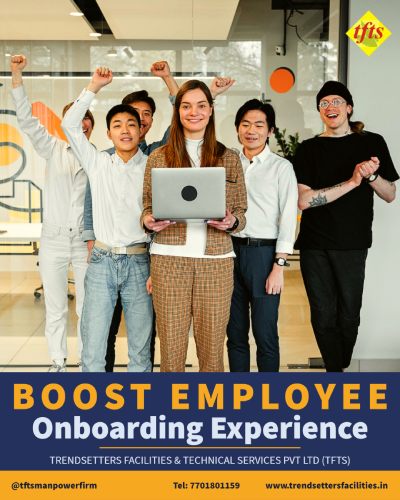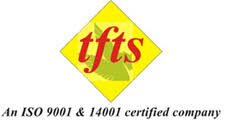
Shares India’s Top HR Outsourcing Company Trendsetters Facilities & Technical Services (TFTS)
Research indicates that employees are most productive within the initial six months of joining a new job, making it a crucial period for employers to train, engage, and foster relationships with new hires. In today’s pandemic-influenced world, where job switches are prevalent, this timeframe becomes even more critical. Employee onboarding is crucial in new employee recruitment as it sets the tone for their experience, ensures a smooth transition into the company culture, maximizes productivity, reduces turnover, and fosters long-term engagement and satisfaction.
Trendsetters Facilities and Technical Services, the leading human resourcing and payroll outsourcing company in Northern India share a few effective ways to optimize the onboarding process and set employees up for triumph in this blog.

1. Personalized Pre-Onboarding:
The onboarding process must begin even before an employee sets foot in the office. By sending personalized pre-onboarding materials, such as welcome emails, informative videos, and company handbooks, organizations can help new hires familiarize themselves with the company’s culture, values, and expectations. This proactive approach not only builds anticipation but also allows employees to hit the ground running on their first day, feeling more connected and confident.
2. Structured Orientation Programs:
An engaging orientation program plays a vital role in easing employees into their roles and fostering a sense of belonging. Instead of bombarding new hires with a deluge of information, organizations should design structured programs that gradually introduce different aspects of the company.
Interactive sessions, team-building activities, and shadowing opportunities can provide valuable insights into the company’s operations, facilitate connections with colleagues, and instill a sense of purpose and excitement.
3. Mentors and Peers:
Pairing new employees with experienced mentors or peers can significantly enhance their onboarding experience. Direct supervisors or managers can provide guidance, answer questions, and offer insights into the company’s culture.
Experienced peer mentors, on the other hand, serve as friendly faces, helping newcomers acclimate to their new environment and navigate the day-to-day challenges. These support systems promote collaboration, provide a safe space for growth, and accelerate the integration process, ultimately leading to higher employee satisfaction and retention.

4. Clear Communication and Goal Setting:
Open and transparent communication is essential throughout the onboarding process. By clearly outlining expectations, goals, and performance indicators, organizations empower new employees to understand their roles and responsibilities.
Regular check-ins and feedback sessions enable managers to address any concerns or challenges promptly, fostering a culture of continuous learning and improvement. Moreover, setting short-term achievable goals allows employees to experience early wins, boosting their confidence and motivation.
5. Continuous Feedback and Evaluation:
Regular feedback loops throughout the onboarding process enable new hires to gauge their progress and make necessary adjustments. Establish checkpoints where supervisors can assess their performance, address concerns, and provide constructive feedback.
This practice not only ensures alignment but also demonstrates the organization’s commitment to the growth and development of its employees.
6. Celebratory milestones:
Acknowledge and celebrate important milestones achieved during onboarding, such as training program completion, successful project contributions, or the first month with the company. These celebrations boost morale and reinforce accomplishment.
Investing in a refined and creative onboarding experience today paves the way for a prosperous tomorrow.



